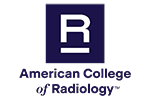Head and Neck Cancer
Head and neck cancer is a group of cancers that usually originate in the squamous cells that line the mouth, nose and throat. Typical symptoms include a persistent sore throat, difficulty swallowing, mouth sores that won't heal, a hoarse voice, and persistent swelling of the neck from enlarged lymph nodes.
Your doctor will likely perform a physical exam to evaluate your condition. To confirm a diagnosis of cancer and determine if it has spread, you may undergo endoscopy, head MRI, CT of the sinuses, head CT, panoramic dental x-ray, dental cone beam CT, PET/CT or chest imaging. If none of these tests indicate cancer, no further action may be needed. However, your doctor may want to monitor your condition if your symptoms persist. If an abnormality is found and tests do not confirm it is benign, your doctor may order a biopsy.
What is head and neck cancer?
Head and neck cancer is a group of cancers that usually start in the squamous cells lining the mouth, voice box (larynx), throat (pharynx), salivary glands, nasal cavity and paranasal sinuses. These cancers are grouped together due to their location and because head and neck surgeons – also known as otolaryngologists or ear, nose and throat (ENT) physicians – are almost always members of the oncology team managing head and neck cancer patients.
Head and neck cancer is more likely to happen in adults over the age of 50 and is twice as likely to occur in men. Risk factors include:
- Age
- Gender
- Alcohol and tobacco use
- Radiation or asbestos exposure
- Poor oral hygiene
- Ethnicity, especially of Asian descent (nasopharynx cancer)
- Human papilloma virus (HPV) infection
Typical symptoms often include a persistent sore throat, difficulty swallowing, a mouth sore that will not heal, and a hoarse voice. Other symptoms depend on the location of the cancer, but often may include:
- Unexplained bleeding in the mouth
- Red or white patches in the mouth
- Swelling of the jaw
- Difficulty opening the mouth
- Ear pain
- Pain when swallowing
- Difficulty breathing and/or speaking
- Frequent headaches
- Chronic sinus infections
- Teeth pain, sore gums, loose teeth
- Unexplained nose bleeds
- Facial numbness or paralysis
- Hearing loss
- Painless mass in the neck
How is head and neck cancer diagnosed and evaluated?
Your doctor will ask you about your medical history, risk factors and symptoms and perform a physical exam.
Your doctor may order one or more of the following imaging tests to help determine if you have a cancer and whether it has spread:
- Nasopharyngolaryngoscopy: This endoscopy exam uses a flexible, illuminated optical instrument called an endoscope to examine the nasal cavity, voice box and throat. With the aid of topical anesthesia, the tube is inserted into the mouth or nose to take pictures and evaluate the abnormal cells.
- Head MRI: During head MRI, a powerful magnetic field, radio frequency pulses and a computer will be are used to produce detailed pictures of the inside of the head and neck. Currently, MRI is the most sensitive imaging test of the head in routine clinical practice.
- CT of the Sinuses: This diagnostic medical test produces multiple images or pictures of a patient's paranasal sinus cavities. The cross-sectional images generated during a CT scan can be reformatted in multiple planes and can even generate three-dimensional (3-D) images. It is primarily used to detect cancers of the sinuses and nasal cavities and plan for surgeries.
- CT of the Head: Much like CT of the sinuses, CT of the head can help detect abnormalities of the paranasal sinuses and nasal cavity.
- Panoramic Dental X-ray: Also called panoramic radiography, this two-dimensional (2-D) dental x-ray examination captures the entire mouth in a single image, including the teeth, upper and lower jaws, surrounding structures and tissues. It can help reveal the presence of oral cancers.
- Dental Cone Beam CT: This type of CT scan uses special technology to generate three dimensional (3-D) images of dental structures, soft tissues, nerve paths and bone in the craniofacial region in a single scan. Cone beam CT is generally used to confirm that radiation treatments are correctly targeted.
- PET/CT: This nuclear medicine exam combines positron emission tomography (PET) and CT scans to create images that pinpoint the anatomic location of abnormal metabolic activity. It can detect head and neck cancer, determine if it has spread, assess the effectiveness of a treatment plan and determine if the cancer has returned after treatment.
- Chest imaging: The most common place for head and neck cancer to spread to is the lungs. Also, patients with head and neck cancer (especially if they are/were smokers) can have a separate lung cancer unrelated to the head and neck cancer. Your doctor may order a simple chest x-ray or CT scan of the chest to investigate.
If these tests do not indicate cancer, no further steps may be needed. However, your doctor may want to monitor the area during future visits.
If these tests do not clearly show that an abnormality is benign, a biopsy may be necessary. A biopsy is the removal of tissue in order to examine it for disease. Biopsies are performed in several different ways. Some biopsies involve removing a small amount of tissue with a needle, while others involve surgically removing an entire suspicious lump (nodule).
Often, the tissue is removed by placing a needle through the skin to the area of abnormality. This is called a fine needle aspiration (FNA). Biopsies can be safely performed with image guidance such as ultrasound, x-ray, computed tomography (CT), or magnetic resonance imaging (MRI).
How is head and neck cancer treated?
The type of treatment recommended depends on the location, size and type of the cancer, its growth rate and the general health of the patient.
Head and neck cancers may be treated with radiation therapy, surgery and/or chemotherapy. What combination of treatments will be used depends on where the cancer is located and how advanced it is.
Cancers of the head and neck frequently spread to the lymph nodes in the neck. Therefore, surgery and/or radiation are often used to treat these nodes as well. This surgery is called a neck dissection and is usually (but not always) done at the same time as the primary site surgery.
If the treatment plan calls for radiation therapy, the neck may be treated with radiation therapy, too. Neck dissection may be performed at a later date depending on your body's response to radiation therapy.
Recent studies indicate that chemotherapy given at the same time as radiation therapy is more effective. Therefore, radiation treatment schedules sometimes include chemotherapy if the stage of the cancer is advanced (advanced stage III or stage IV). Drugs most commonly given in conjunction with radiation therapy are cisplatin (Platinol) and Cetuximab (Erbitux).
Occasionally, other drugs may include fluorouracil (5-FU, Adrucil), carboplatin (Paraplatin), paclitaxel (Taxol), and docetaxol (Taxotere). This is only a partial list of chemotherapy agents; your physicians may choose to use others. The chemotherapy may be given in a variety of ways, including a low daily dose, a moderately low weekly dose, or a relatively higher dose every three to four weeks.
Typically, one of the following radiation therapy procedures may be used to treat head and neck cancer:
- External beam therapy (EBT): EBT delivers a beam of high-energy x-rays or protons to the tumor. A machine generates and targets the radiation beam at the tumor site. EBT destroys cancer cells, and conformal treatment plans spare surrounding normal tissues from exposure.
- Intensity-modulated radiation therapy (IMRT): an advanced mode of high-precision radiotherapy that uses computer-controlled x-ray accelerators. The accelerators conform and deliver a precise radiation dose to the three-dimensional (3-D) shape of the tumor. The machines control the intensity of the radiation beam to focus a higher dose on the tumor and minimize radiation exposure to healthy cells.
See the Head and Neck Cancer Treatment page for more information.
Which test, procedure or treatment is best for me?
This page was reviewed on August 25, 2024



